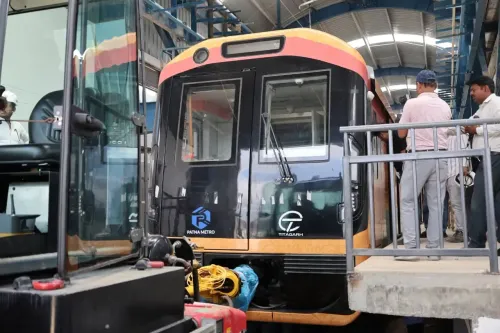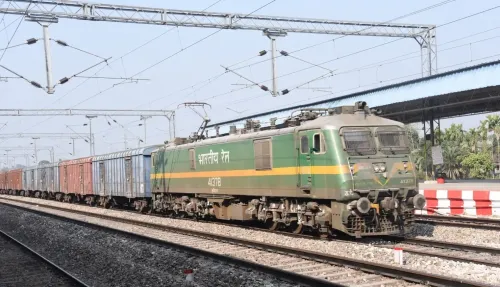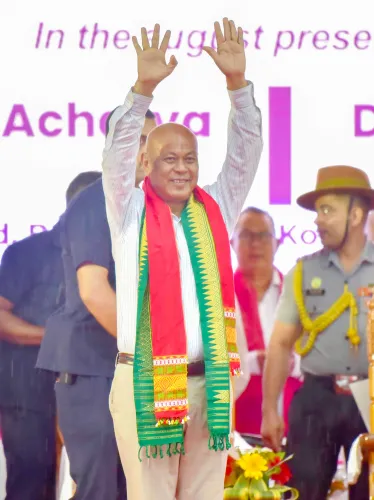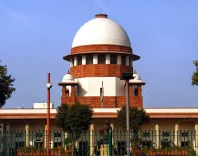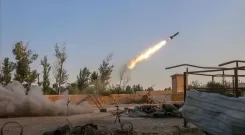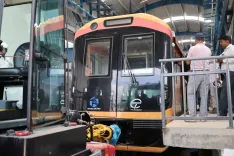How Did the Army Brave Darkness and Fast Currents to Save Lives in Himachal?
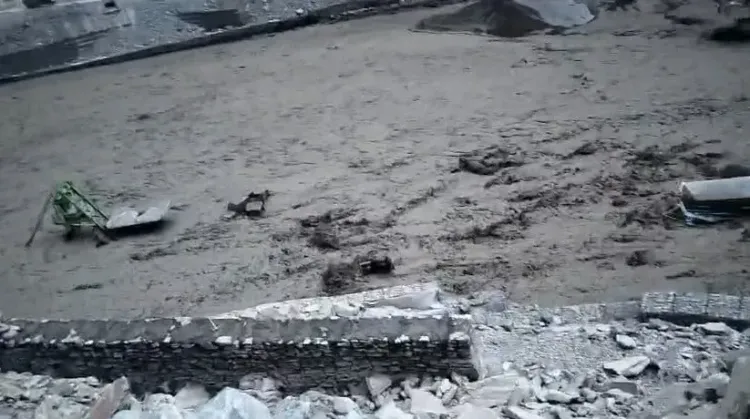
Synopsis
Key Takeaways
- The Indian Army's proactive response prevented potential tragedy during flash floods.
- Advanced technologies like drones were utilized to assist in rescue operations.
- Continuous monitoring and support are provided to rescued civilians.
- Collaborative efforts highlight the importance of disaster preparedness.
- The situation emphasizes the Army's commitment to safeguarding lives in hostile conditions.
Shimla, Aug 14 (NationPress) Demonstrating remarkable courage amid darkness, swift currents, and treacherous terrain, the Indian Army announced on Thursday that its rapid response prevented a serious disaster when a sudden flash flood hit Hojis Lungpa Nala in the mountainous Kinnaur district of Himachal Pradesh.
The event occurred around 7 p.m. on Wednesday, instigated by a cloudburst in the higher elevations of the Rishi Dogri Valley. The floodwaters overwhelmed the bridge spanning the Sutlej River, resulting in injuries to one person.
This incident took place at an active road construction site managed by the CPWD leading towards Gangthang Bralam, as reported.
Upon receiving an urgent call from the Superintendent of Police, the Army swiftly deployed a humanitarian assistance and disaster relief (HADR) team.
Braving the strong currents, the team arrived at the scene and found four civilians stranded on the opposite bank.
With precision in challenging circumstances, the HADR team illuminated the area to facilitate night-time rescue operations. They also guided the trapped civilians to higher, safer ground and transported the injured person to the Regional Hospital in Reckong Peo, the district headquarters.
The Indian Army utilized advanced equipment for the operation, including the logistics drone high altitude (LDHA) system to deliver essential supplies, such as food and coconut water, across the floodwaters to sustain the stranded individuals overnight.
The civilians rescued are currently under continuous observation at an Army camp in Pooh.
Plans are underway to return the stranded individuals to their original bank once water levels decrease, as indicated in a statement by the Indian Army.
“This operation exemplifies the Army’s readiness, innovation, and dedication to saving lives, even in the harshest conditions and extreme weather,” the statement added.
In a separate incident, several homes and vehicles were swept away in flash floods caused by cloudbursts in Bhimdwari within the Anni subdivision of Kullu district on Wednesday evening. Fortunately, no human casualties have been reported.
All educational institutions in the Banjar subdivision of Kullu district will remain closed on Thursday as a precautionary measure.
A cloudburst in the Gondhla region of Lahaul-Spiti district also resulted in floodwaters entering Triling village. While there were no reports of casualties or property damage, National Highway 3 was closed to traffic.


